The London Orthotic Consultancy provides bespoke helmets for those babies who have undergone craniosynostosis surgery at Great Ormond Street Hospital; we have been doing so since 2018. We are happy to take referrals from other hospital’s performing the same endoscopic surgery.
At birth, a baby’s skull is made up of bony ‘plates’ separated by ‘sutures’. The sutures eventually fuse or close so that the skull’s role as a protective shell for the brain is complete. This normally happens by the age of 20-24 months.
In craniosynostosis, one or more of the sutures prematurely fuse, either in the womb before the baby is born or after delivery. It can restrict the growth of the skull from the fused suture, potentially restricting space for the growth of the brain, therefore affecting the development of the brain.
The restriction to growth from a suture also causes misshapen or asymmetric growth.
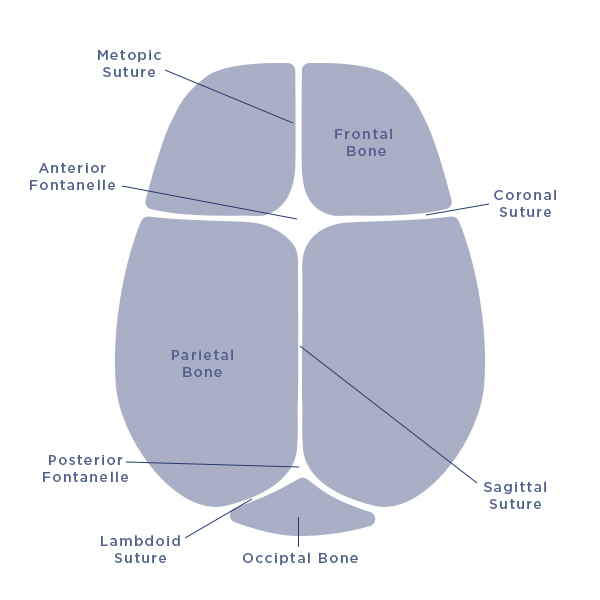
The most common form of craniosynostosis is sagittal synostosis, where the sagittal suture (located at the top of the head) fuses too early. This causes bi-lateral flattening of the parietal prominence.
Confusingly, the resulting head shape looks very like scaphocephaly, one of the presentations of positional plagiocephaly – the skull is long from front to back and narrow from ear to ear.
If you run your hand along the top of the head, a ridge may be felt. Visually you will see frontal bossing and a more prominent and defined occipital bone at the back.
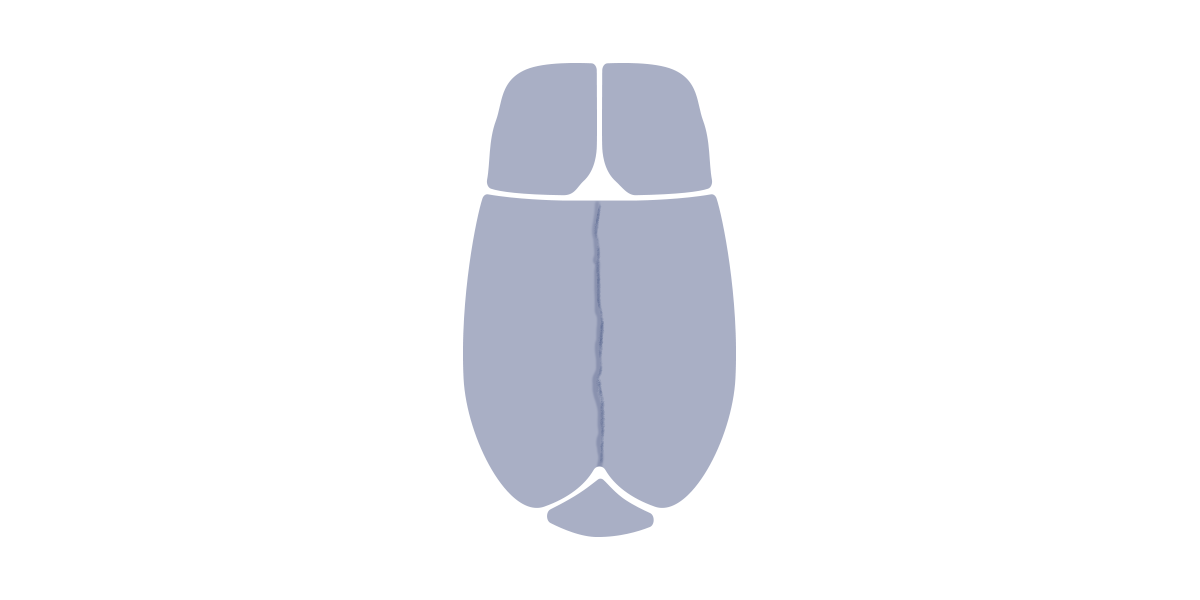
Another type of craniosynostosis is metopic synostosis, whereby the suture running down the centre of the forehead to the bridge of the nose fuses prematurely; there is flattening of the temporal ridge.
The resulting head shape is known as trigonocephaly, characterised by the forehead being pointed and triangular in shape. The eyes being close-set and the outside edge of the brow ridge being underdeveloped are also characteristic of this synostosis. Ridging of the suture may also be present.
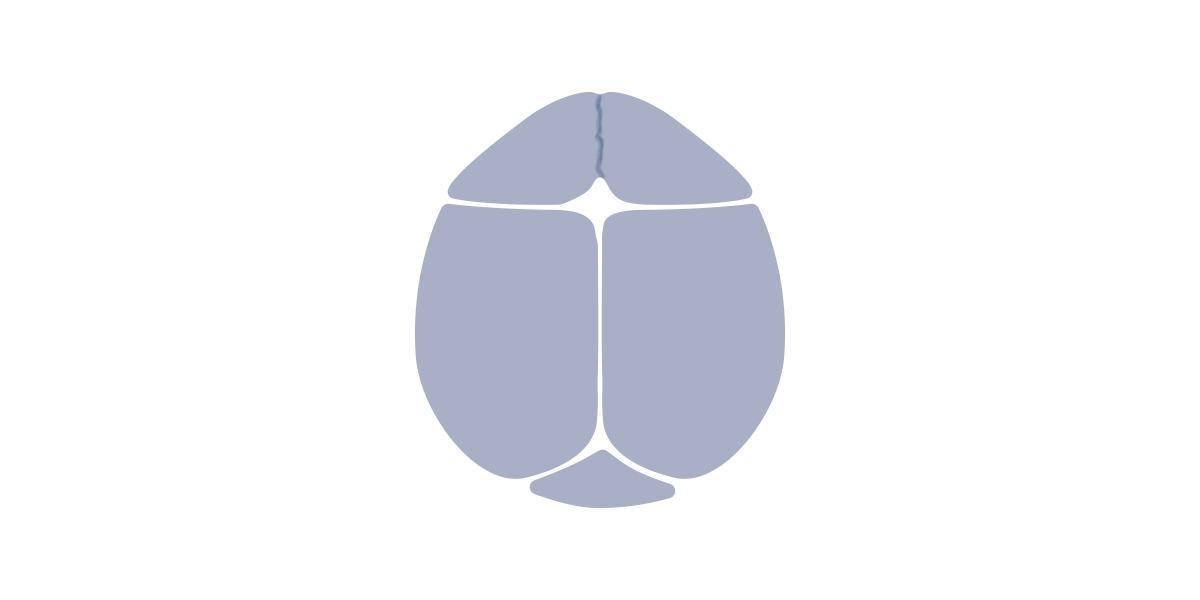
Unicoronal synostosis is another type of craniosynostosis which is characterised by flattening of the forehead on the side of the affected suture. The outside edge of the eyebrow ridge is underdeveloped and there is bossing of the forehead on the opposite side. There is generally asymmetry of the skull base and face, with a displacement of the ears and lateral deviation of the nose away from the side of the frontal flattening.
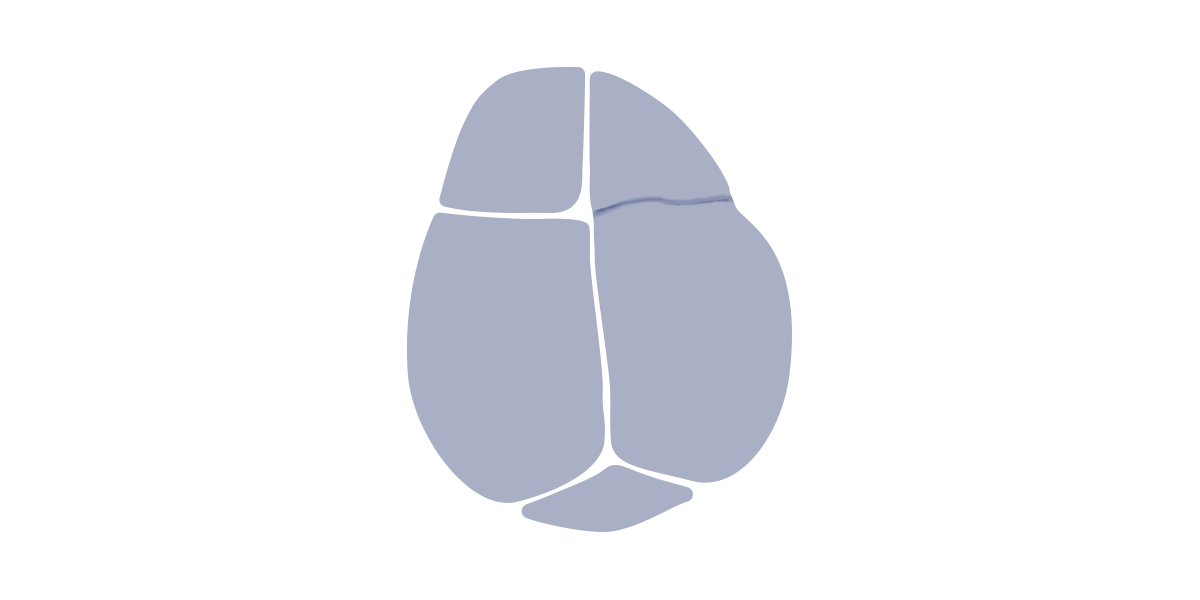
The conventional treatment for craniosynostosis has been open cranial surgery – to correct the shape of the head and allow for normal brain growth.
Great Ormond Street Hospital (GOSH) is pioneering a new approach - the removal of the fused suture by endoscopic strip craniectomy as an alternative, less intrusive option than traditional surgery.
On referral from GOSH consultants, the London Orthotic Consultancy provides the post-operative orthotic treatment. The cranial remoulding required is very similar to that provided by LOC to babies with Positional Plagiocephaly. LOC has been providing this treatment for nearly 20 years and our clinicians have unrivalled expertise in this area.
Approximately one week after surgery (when post-surgery swelling has reduced) a scan is taken for a Cranio Lite to be manufactured at our workshop on site in our Kingston clinic.
A week later, this 'helmet’ is fitted. This first helmet is fully enclosed offering the benefits of both correction and protection. The Cranio Lite is constructed of a 3D-printed shell with a soft-to-touch but firm liner.
This first helmet will be worn for 3-6 months depending on the baby’s rate of growth and change in head shape. The baby will then progress to further Cranio Lite helmets, which may have an opening at the top depending on the head shape.
Read more detailed information about our post-operative treatment for Craniosynostosis.
Get immediate and free advice from one of our experienced clinicians.
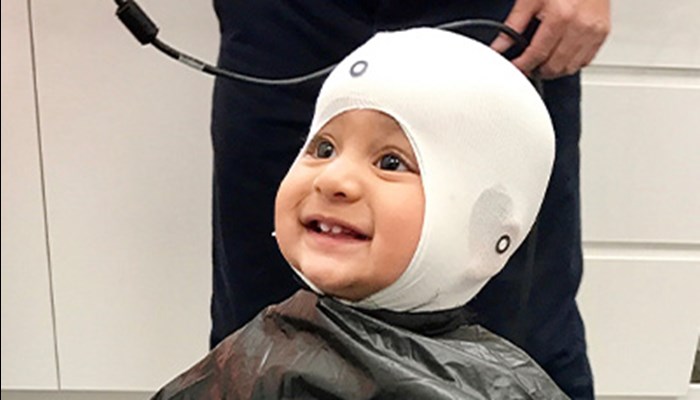
This is very much dependent on how fast your baby is growing. The faster the growth, the more frequently your baby will be seen so that the helmet can be adjusted. In general, reviews will happen at two to four-week intervals.
The price of treatment covers:
Yes - All babies that have completed their course of treatment with us have achieved a measurable improvement in head shape. However, you don’t have to take our word for it.
Recent independent research conducted by a University Hospital in Germany has endorsed the treatment for babies with moderate or severe plagiocephaly.
A larger, retrospective study has just been published that found complete correction was achieved in 94.4% of babies treated with helmet therapy.
The results were conclusive: repositioning achieved acceptable correction in 77.1% of cases, but 15.8% were moved onto helmet therapy because re-positioning was not working. Meanwhile, 94.4% of the infants who started in the helmet-treated group achieved full correction, as did 96.1% of those who were transferred from the repositioning group into the helmet-treated group.
Further information can be found on our Plagiocephaly Research page.
If your baby has a temperature or a fever due to illness you must remove the band. The band can be put back on once the temperature has returned to normal.
The optimum age for treatment is between four and seven months.
This is because the skull is most malleable at this age and improvements to head shape tend to take less time and are more dramatic. That is not to say that helmet therapy should be ruled out if the baby is older than seven months. Routinely, babies up to the age of 16 months can be treated very successfully.
The cut off age is around 18 months when the fontanelles (soft spots on the head) are no longer malleable. As babies grow and develop at different rates, it is always worth checking if you are not sure. There have been cases where a baby’s fontanelles have not fused yet by the age of 18 months, who have achieved successful, but less-marked results with cranial remoulding therapy.
Torticollis is a condition in which a tight or shortened muscle in one side of the neck causes the head to tilt or turn to one side, resulting in the infant resting its head in the same position. In 2013, we analysed the data from all first appointments in our Kingston clinic and found that 20% of the babies examined had some kind of neck condition that was causing head immobility.
The clinics and clinicians that provide this treatment in the UK will have received similar training and experience. However, we are the only clinic that manufactures its own helmet and our clinicians are closely involved with the process for each individual helmet that we produce.
In addition, we do not restrict review appointments to a set number, we are extremely flexible and respond to individual parents' needs so that the best outcome can be achieved for each baby.
The LOCband is non-invasive and works by applying gentle, constant pressure over the areas of the baby’s skull that are most prominent while allowing unrestricted growth over the flattened areas. The band consists of a soft foam layer inside a thermoplastic shell. As the baby grows, the band will be adjusted frequently to gently guide the skull into a more symmetrical shape.